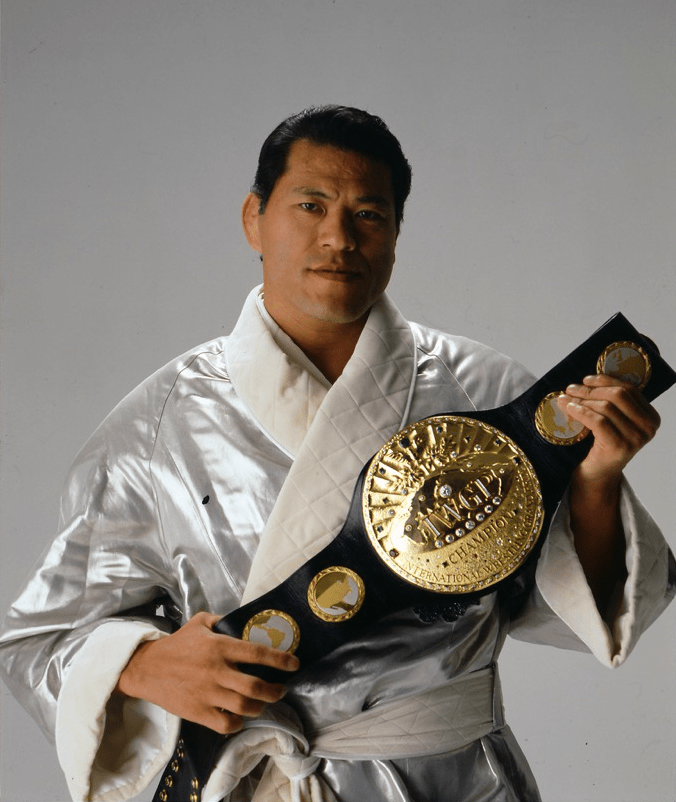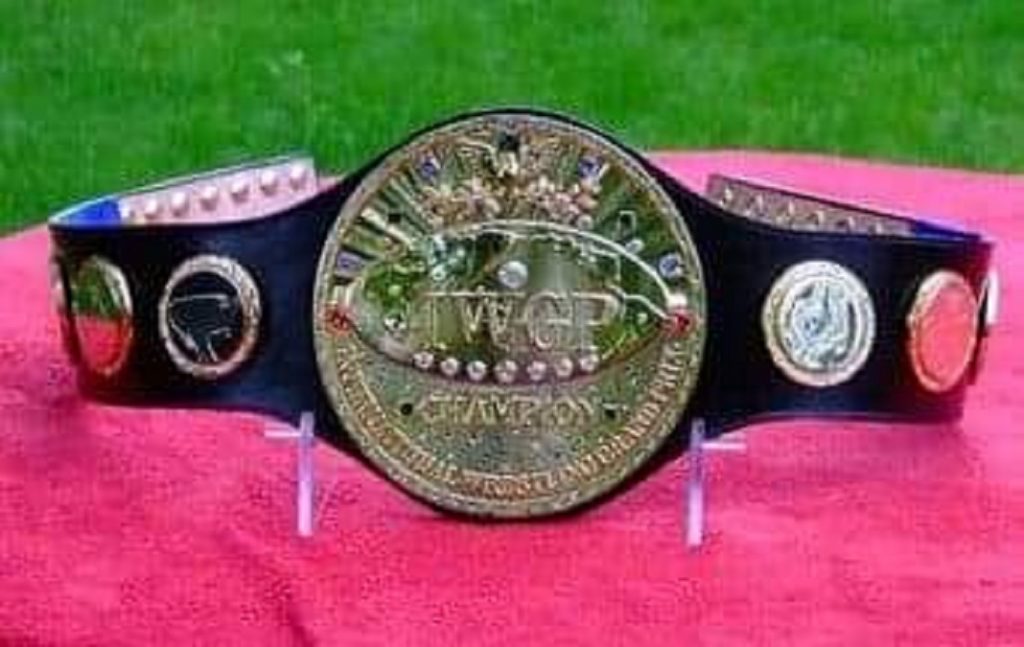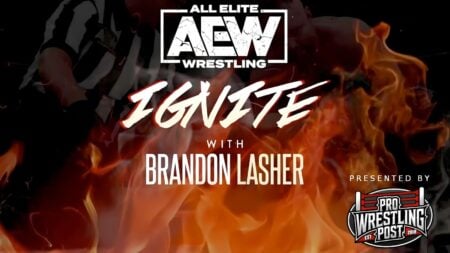The IWGP Heavyweight Championship is the most prestigious wrestling title in New Japan Pro Wrestling. It boasts a long and interesting history and has been held by some of the best wrestlers of all time.
Yet there were also times when the title – like the company that spawned it – experienced controversy and hardship. It is one of the most respected and rewarding wrestling titles in the entire wrestling industry.
This is part one of the history of the IWGP Heavyweight Championship.
The History of the IWGP Heavyweight Championship
Part 1: Origin and Peak
NJPW was founded in 1972 by Antonio Inoki. His philosophy was to create a wrestling promotion centered on ‘Strong Style.’ Of course, that is a term that has changed meaning many times over the decades.
But Inoki’s original approach was to make his wrestling product as legitimate and sports-like as possible. To that end, NJPW’s wrestling style emphasized realistic selling, athleticism, submission grappling, and a strong focus on martial arts.
To help sell that realistic style, Inoki created a governing body for NJPW. This governing body would oversee all aspects surrounding the company’s titles. That body became known as the International Wrestling Grand Prix: IWGP.
Of the three main divisions in NJPW – junior heavyweight, heavyweight, and tag team – the heavyweight division’s title is the newest.
The IWGP Heavyweight Championship, as it’s known now, was created in 1987. But there was an earlier incarnation of the belt that predates even that one.

The History of the IWGP Heavyweight Championship
NJPW hosts an annual tournament called the G1 Climax. It’s the premier and most important annual event aside from their January 4 Tokyo Dome Show.
This tournament has been called different things in different years. In 1983, it was called the IWGP League, and the tournament’s winner would receive a title belt. The winner of one tournament would only defend it in IWGP League matches and nowhere else.
Hulk Hogan was the inaugural champion, claiming the title on June 2nd, 1983. He held the belt for one year before losing it to Inoki in the 1984 IWGP League.
After that, Inoki would hold onto the belt more or less nonstop until 1987. It was at this point when this belt and its format would be changed.
In 1987, Inoki defeated Masa Saito in a tournament and became the first IWGP Heavyweight Champion in the championship’s current format.
Unlike its predecessor, this championship is defended at any time and is treated as the premier title in NJPW. However, Inoki still wanted to maintain the ‘legitimate’ image that NJPW had cultivated.
To do so, he imposed stringent rules surrounding the title and scheduled defenses. For example, a wrestler HAD to defend a title when scheduled, even if defenses themselves were rare.
And the champion had to be in top form and couldn’t take time away as the champion for virtually any reason. Furthermore, if the champion were injured, they had to vacate the championship.
The History of the IWGP Heavyweight Championship
Inoki proved this when he himself vacated the title on May 2nd, 1988, because he fractured his foot. This was despite the fact that he was NJPW’s founder, booker, and arguably his top star. He created the rules, and he proved their rigidity by following them to the letter.
Six days later, Tatsumi Fujinami became the second person to hold the title, defeating Big Van Vader in a tournament to win the title. However, this first reign was rather controversial because it only lasted 19 days.
And this was because the IWGP governing body vacated the title due to a title defense against Riki Choshu ending in a no-contest. NJPW – and Japanese wrestling companies in general – eschewed controversial and ‘dusty’ finishes in favor of clean, decisive ones.
So to fix this problem, Fujinami defeated Choshu cleanly in a singles match to win the vacant title for the second time.

The next big title event came on April 24th, 1989, at a show called Battle Satellite at the Tokyo Dome. That show featured a one-night single-elimination tournament for the heavyweight title, and Fujinami lost in the semi-final round.
When it was over, the IWGP Heavyweight Championship was won by Big Van Vader, the first gaijin/foreigner to hold the title.
The Movement of the Title
Over the next three years, the title changed hands between four different people. Vader lost the title a month after winning it to a Soviet grappler named Salman Hashimikov, who lost it to Choshu a month later.
Then Vader won it from Choshu and held it for over a year. Vader had brutal wars for the title with the likes of Choshu and Fujinami, and by 1992, all three of them had each enjoyed lengthy runs as IWGP Heavyweight Champion.
But on August 16trh, 1992, a new player entered the picture: The Great Muta. Muta, who also wrestled under his real name, Keiji Mutoh, was part of a legendary and iconic class of NJPW wrestlers.
He was one of the fabled Three Musketeers of NJPW, a trio of incredibly talented wrestlers that graduated from the same training class.
The other two in that group were Masahiro Chono and Shinya Hashimoto. All three of them became top stars in NJPW and were critical to NJPW’s financial success in the 1990s.
Muta was the first of the Musketeers to win the heavyweight title. He held it for a then-record-breaking 400 days.
Unfortunately, he lost it to Hashimoto, who from then on would cement himself as NJPW’s ace. Muta became to NJPW what John Cena has become to WWE: their stalwart defender and unbreakable loyalist.
Not only was it Hashimoto’s job to bring out the best in his opponents as champion, but he also had to defend NJPW from outsiders. You see, Inoki did have one story concept he loved to use: the outside invaders’ concept.
Inoki would book outsiders, usually from other companies, to attack his wrestlers and to try and ‘takeover’ New Japan. But, of course, the heroic NJPW wrestlers, led by Hashimoto, would win in the end, preserving NJPW’s status as the King of Sports.
The History of the IWGP Heavyweight Championship
NJPW did this with many companies, but the main invaders were shoot wrestlers from places like the Union of Wrestling Forces International (UWFi).
These outside invaders were led by Nobuhiko Takada, a former NJPW wrestler who had a major influence on shoot-style wrestling in Japan. Takada brought even more credibility to NJPW due to his ‘real fighting’ background.
He proved this when he and Mutoh (wrestling as himself) drew a record 67,000 fans in the Tokyo Dome. Three months later, the invading Takada defeated Mutoh to become IWGP Heavyweight Champion.
That victory shocked the New Japan faithful, who were stunned that one of the Three Musketeers lost to an outsider.
But Takada’s victory lit a bigger fire under Hashimoto’s ass than anyone else before. In one night, Takada had (in storyline) damaged NJPW’s reputation. Taken the company’s biggest prize. AND beaten one of his close friends.
So Hashimoto had to win at all costs to settle the score. And so, on April 29th, 1996, Hashimoto beat Takada to avenge Mutoh, save NJPW and regain the IWGP Heavyweight Championship.
The fans loved that feud so much that the Hashimoto vs. Takada match drew almost $6 million in at the gate, which remains one of if not the biggest moneymaking rivalries in Japanese wrestling history.
Unfortunately, the IWGP Heavyweight Championship, and NJPW, for that matter, were about to experience some major trouble. So this ends part one of the history of the IWGP Heavyweight Championship.






